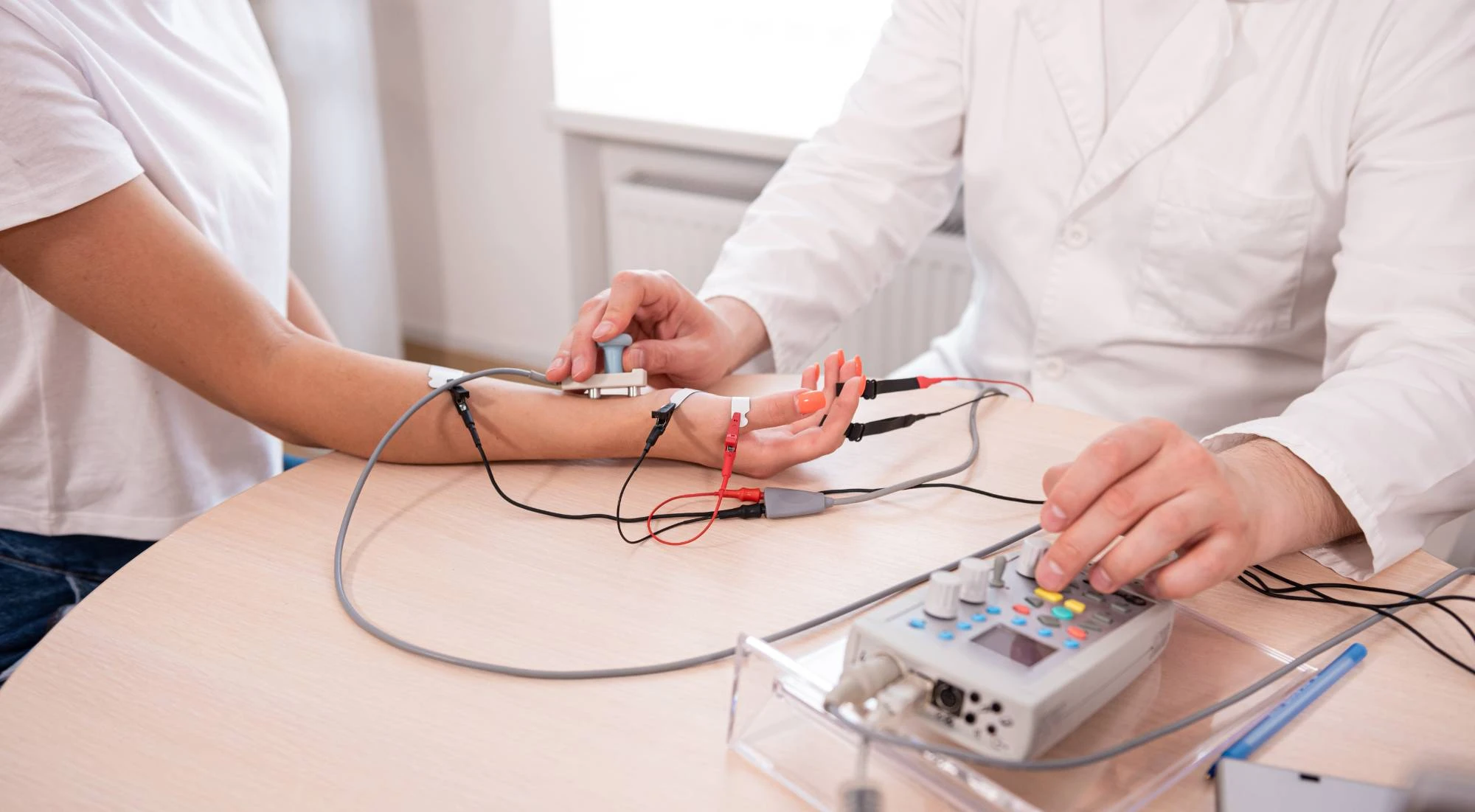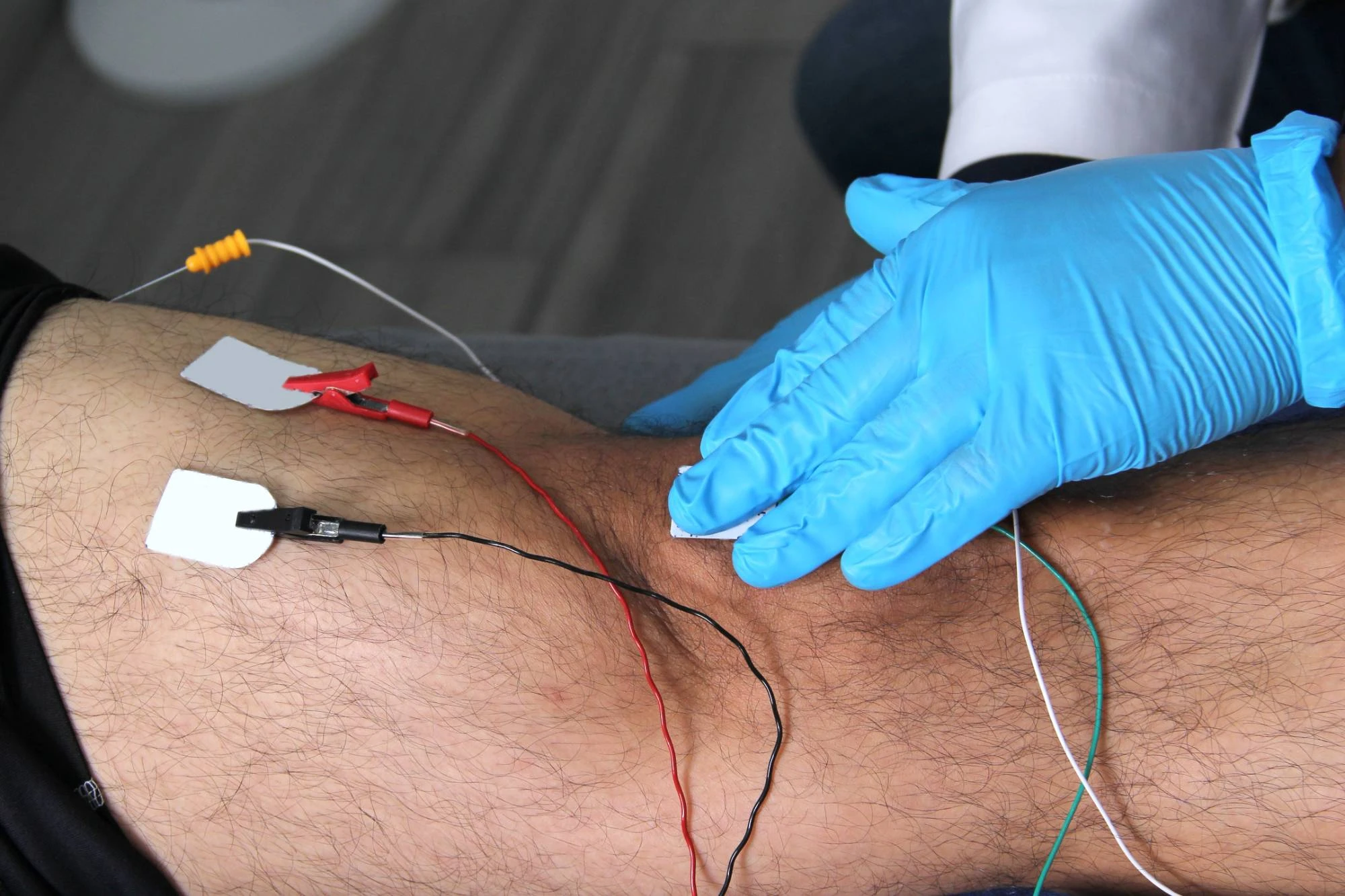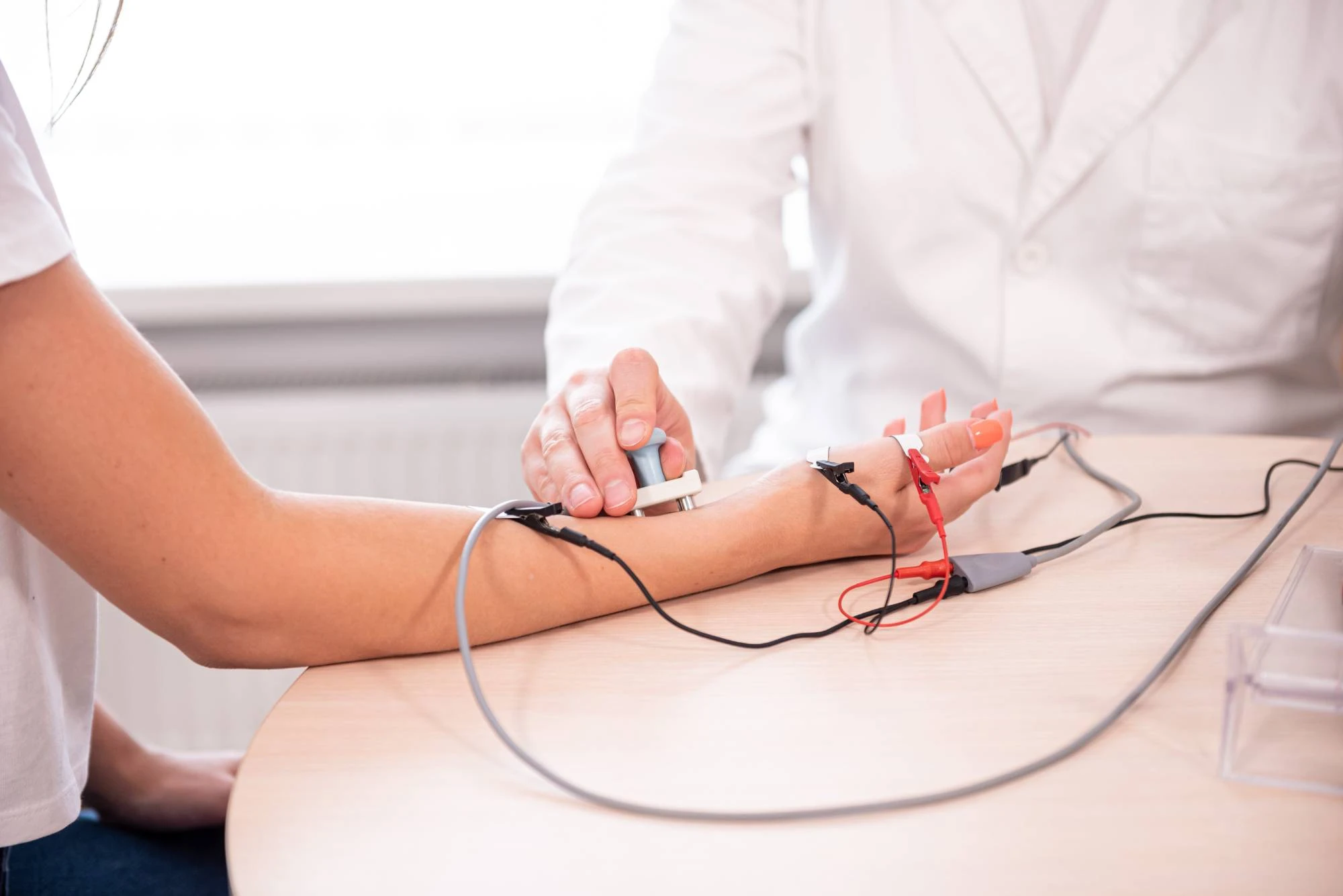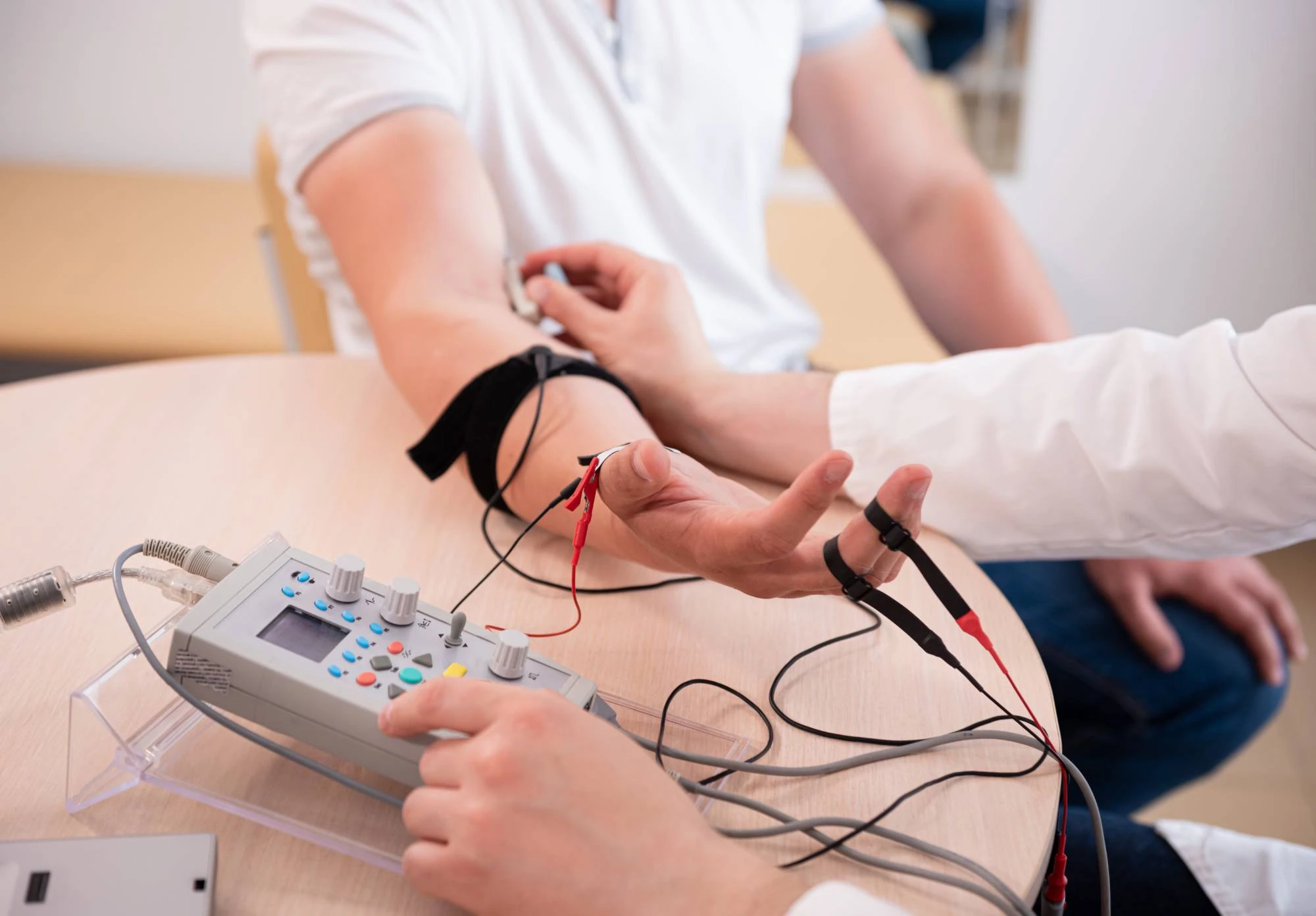Advanced EMG testing that pinpoints exactly what’s causing your symptoms so you can finally move forward with the right treatment.

Reviews

You’re tired of guessing what’s wrong. That numbness in your hands, the shooting pain down your leg, or the muscle weakness that’s making simple tasks difficult – you need real answers, not more uncertainty.
EMG testing gives you those answers. This diagnostic procedure measures the electrical activity in your muscles and nerves, revealing exactly where the problem lies and how severe it is. No more wondering if it’s carpal tunnel, a pinched nerve, or something more serious.
When you know what you’re dealing with, you can stop worrying about the unknown and start focusing on getting better. The test results guide your treatment plan, whether that’s physical therapy, medication, or other interventions. You’ll finally have a clear path forward instead of just managing symptoms without understanding the root cause.
NY Spine Medicine brings specialized expertise in neurological diagnostics to Surfside residents. We focus specifically on spine, nerve, and muscle conditions, which means you’re getting care from doctors who see cases like yours regularly.
Years of experience in the South Florida area have taught our team exactly what local patients need: accurate testing, clear communication, and practical treatment planning. You’re not just another appointment – you’re working with specialists who understand the impact nerve problems have on your daily life.
We’ve built our reputation on thorough diagnostic work and honest communication with patients about their conditions and treatment options.

The EMG testing process involves two parts that work together to give you complete information about your nerve and muscle function. First, you’ll have a nerve conduction study where small electrical pulses test how well your nerves transmit signals. This part feels like mild static electricity and helps identify nerve damage or compression.
Next comes the electromyography portion, where a thin needle electrode is inserted into specific muscles to measure their electrical activity. The needle is much thinner than those used for blood draws, and while you’ll feel it, most patients find it quite tolerable. You’ll be asked to relax and then gently contract certain muscles so the equipment can record the signals.
The entire process typically takes 30 to 60 minutes, depending on how many areas need testing. You’ll get your results immediately after the test, along with a clear explanation of what they mean for your condition and treatment options. No waiting weeks for answers or trying to interpret confusing medical reports on your own.

Ready to get started?
Your EMG testing includes both nerve conduction studies and electromyography testing, giving you a complete picture of your neurological function. The testing covers whatever areas are causing your symptoms, whether that’s your arms, legs, back, or multiple locations.
You’ll receive immediate interpretation of your results from experienced physicians who specialize in these conditions. No generic reports or vague explanations – you’ll understand exactly what the test found and what it means for your specific situation. We take time to answer your questions and explain how the results connect to the symptoms you’ve been experiencing.
The diagnostic information becomes the foundation for your treatment plan, whether you’re working with NY Spine Medicine for ongoing care or taking the results back to your referring physician. You’ll leave with clear documentation and a solid understanding of your condition, plus practical next steps for addressing your symptoms.

New York:
Florida:
Support